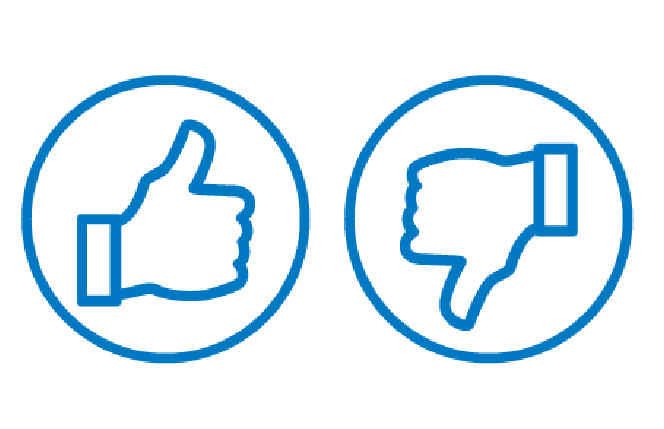Understanding Health Insurance Deductibles
Jan 01,2025
Read Time 4 Minutes

Health insurance terms can be confusing. Words like deductible, out of pocket, copay, and coinsurance can seem similar, yet they have distinct meanings and impact what you ultimately pay for healthcare. That’s why understanding what they are and knowing how much you might pay is vital to choosing the best plan for you.
What Is A Deductible?
You may be familiar with the term deductible from having auto or homeowner’s insurance. A health insurance deductible works the same way. The deductible is the amount you pay out of pocket for healthcare services before your health plan begins to pay.
For example, if your health plan has a $1,000 deductible, you pay the first $1,000 for the healthcare services you receive. Deductibles vary from a few hundred to several thousand dollars each year, depending on the health plan you select during open enrollment.
What Happens When You Meet Your Deductible?
Once you meet your deductible, you and your health plan share the costs for covered healthcare services. This is called coinsurance. You will pay coinsurance until you reach your out-of-pocket maximum. Those terms are described in more detail below.
Remember to keep track of your spending. Many health plans have websites or apps that make it easy to check where you are in meeting your deductible and out-of-pocket maximum.
How Is A Deductible Different From An Out-Of-Pocket Maximum?
Think of an out-of-pocket maximum as a cap or limit. It’s the most you will pay for covered medical expenses in a year. Once you reach this limit, your health plan will pay 100% of the costs for covered benefits. Your deductible, copays, and coinsurance all count toward reaching your out-of-pocket limit, but your monthly premiums and any costs for services your plan doesn’t cover do not.
What’s The Difference Between A Copay And Coinsurance?
Copays and coinsurance are shared healthcare costs. A copay is a set amount you pay when you receive medical services. You typically pay this amount at the doctor’s office before getting care.
Coinsurance is the percentage of costs you pay after you've met your deductible. For example, let’s say your share of the costs is 20%. If you have a $100 medical bill and you've met your deductible, your coinsurance payment will be $20.
Your copay and coinsurance amounts depend on the health plan you choose. They are listed on your open enrollment materials, so you always know what these amounts will be before you choose a plan.
What Is An Individual Vs. Family Deductible Plan?
If you need a health plan for yourself and at least one family member, you might have two choices: family deductible plans and family plans with individual deductibles.
With a family deductible plan, all healthcare costs for your family members are added together and applied to the family deductible. This type of deductible is also called an aggregate deductible. Once you meet the family deductible, you’ll pay copays and your share of the costs for each family member until you meet your plan’s out-of-pocket maximum. The advantage of a family deductible plan is the simplicity of having every claim applied to a single deductible.
A family plan with individual deductibles includes both a family deductible and a separate deductible for each family member. With this type of plan, each claim is applied to both deductibles. When one family member meets their individual deductible, you and your health plan will begin to share the covered healthcare costs (coinsurance) for that person. You’ll still need to meet the separate family deductible, which any combination of family members can meet, before coinsurance kicks in for everyone. This type of deductible is also called an embedded deductible. It can be a good choice when only one family member has high medical expenses.
How Does A High-Deductible Health Plan Differ From A Low-Deductible Health Plan?
A high-deductible health plan (HDHP) is just what it sounds like. You’ll have a higher deductible, but your monthly premium payment will be lower. HDHPs are often combined with a health savings account (HSA) that enables you to set aside money before taxes to pay for certain medical expenses in the future. Many people choose high-deductible health insurance plans because the monthly cost is often lower.
On the other hand, a low-deductible health plan (LDHP) has a lower deductible and higher monthly premiums.
HDHPs and LDHPs both have pros and cons. If you're in good health and rarely use your plan, a higher deductible health plan may be best for you and your budget. However, you might consider a low-deductible health plan if you or a family member is older, pregnant, or has a chronic health condition, or if you have young children. You'll likely reach your deductible limit quickly, and your plan will help with health costs sooner.
As you’re deciding on what health plan to choose during open enrollment, take time to compare a low- and high-deductible plan side-by-side. Consider your health and financial situation to see which best suits your budget and well-being.
If you choose or already have an Anthem health plan, you can check benefits and track where you are with your deductible on the SydneySM Health app or anthem.com.
Learning about deductibles and other health insurance terms can help you make the best choice for you and your family during open enrollment — and help you save money on healthcare over the next year.
Was this information helpful?
Sources:
Centers for Medicare & Medicaid Services: No surprises: Health insurance terms you should know (accessed May 30, 2024): cms.gov.
Healthcare.gov: Glossary (accessed May 30, 2024): healthcare.gov/glossary.
Healthcare.gov: How to pick a health insurance plan (accessed May 30, 2024): healthcare.gov.
Healthinsurance.org: Health insurance and Obamacare terms (accessed May 30, 2024): healthinsurance.org.
1070425MUMENMUB 05/24
